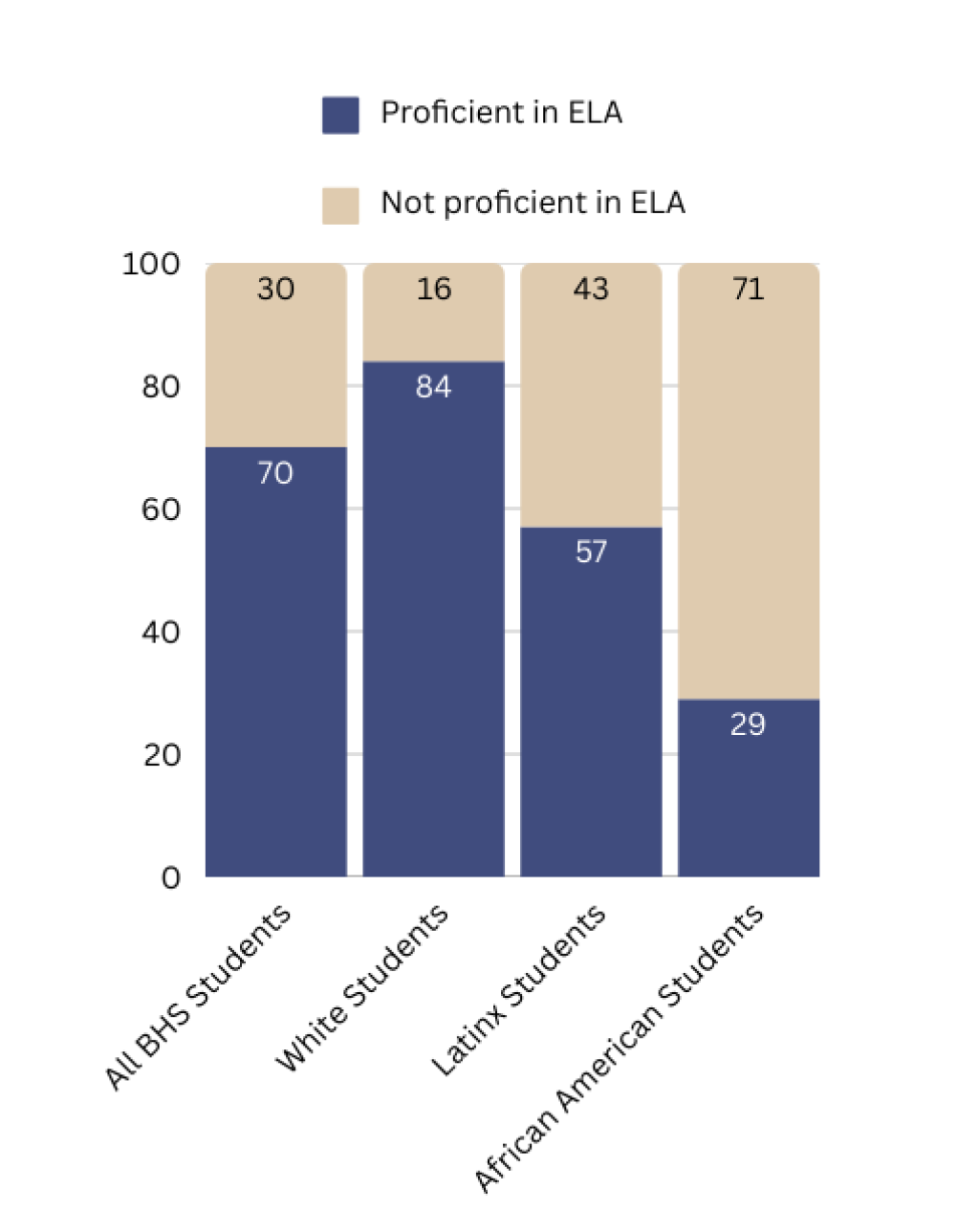On Wednesday, Jan. 22, 2024, the Berkeley High School Civic Leaders club, the Black Scholars Center, and the Black Student Union hosted a panel of BHS teachers, administrators, and school board members to discuss the achievement gap in Berkeley Unified School District. The discussion, facilitated and led by School Board Representative Winta Clark and Civic Leaders Club President Eva Levenson, focused on resources for academic support, district strategies combating the achievement gap, and ways to spread awareness of BUSD's achievement gap.
Research conducted by Stanford University for the Educational Opportunity Project found that BUSD had the second largest gap in reading and math scores, among the nation's five thousand largest districts. According to the study, five grade levels separate white and Black BUSD students in mathematics and reading. Levenson cited this data as an inspiration to host the panel.
“I recently learned that Berkeley has the second largest achievement gap in the nation,” Levenson said, “That knowledge and people in my club wanting to do action on the issue drove my club to host the panel. My experience with dyslexia also motivated me to work towards a school system that is built for all students to succeed, not just neurotypical or rich kids or white people, (but) for everyone.”
Superintendent Enikia Ford Morthel began the panel by highlighting statistics on the achievement gap. “We have about 9,000 students in BUSD, from preschoolers all the way to high school,” she said, “Of those 9,000 students, about 11 percent are African American, so a little over 1,000 students. Regardless of what our students look like or sound like, our job and responsibility for all 9,000 of those students is to enable and inspire them to achieve academic excellence and make positive contributions to the world.”
Ford Morthel also elaborated on English Language Art (ELA) proficiency rates. According to Ford Morthel, 70 percent of BHS students are proficient in ELA. 84 percent of white students are proficient, 57 percent of Latinx students are proficient, and 29 percent of African-American students are proficient.

“The thing about the achievement is not that it just exists, but is that it's actually predictable,” Ford Morthel said.
The discussion continued with Jessie Luxford, director of the BHS Bridge program, and Spencer Pritchard, co-head of African American studies at BHS. They explained academic resources provided to the students, naming the Black Scholar center, a program in its third year, offering tutoring and snacks to students, and the College Career Center, which offers resources for college preparation, study spaces, and tutoring.
Luxford touched on the Early Academic Outreach Program (EAOP), a partnership between the University of California Berkeley and BHS. According to the EAOP website, the program has spent 45 years dedicated to helping underserved students in the Bay Area prepare for college.
“EAOP is a great program. They take a cohort of students in March and in the end of the ninth grade. There's an advisor at the College Career Center and they help you with college applications and creating a plan, and their goal is to help you just like figure out your pathway for after you graduate from high school,” Luxford said.
School Board Member Jennifer Shanoski and former School Board Director Laura Babitt ended the panel highlighting the programs the district has already implemented to try and combat the achievement gap. Shanoski shared some of the existing plans.

“The Comprehensive Coordinated Group Integrating Services (is) a plan that includes resources for students in groups that have been over-identified for particular special education programs, especially in the earlier grades,” Shanoski said, “We have a big literacy action plan that's been out in our third year of really overhauling our, especially in our K-5 literacy curriculum and interventions. So we're making big shifts there. ”
The panel concluded with Superintendent Ford Morthel addressing the critical role students play in shaping their academics and in lowering the achievement gap. She urged students to take ownership in their education, stating, “The end of the day, y'all, I'm gonna do what I'm supposed to do, they're gonna do what they're supposed to do, your educators, we all got work to do, but the work has to start with you. The work has to start with you knowing and understanding what's expected of you, of you being agents of your own learning. Don't wait for nobody else to say of you.”





